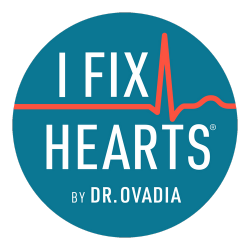Avoiding heart disease is a goal for a lot of people, and they take intentional steps that they think will reduce their risk. Steps like eating ‘heart-healthy’ cereals to reduce their cholesterol, avoiding fats, and trying to fit exercise into their schedule.
While the chosen methods may not be the healthiest, exercise and a healthy diet are crucial for preventing heart disease.
But there’s another factor that’s commonly overlooked. Worst of all, this factor is hugely prevalent and incredibly destructive.
So what is it?
Stress.
How stress contributes to heart disease
Stress has been known to have a significant negative impact on the heart for a long time. Links have often been made between stressful situations or events and sudden heart attacks or death.
Our bodies respond to stress with the ‘fight-or-flight’ mode, releasing hormones to help us in high-risk situations. Unfortunately we’ve evolved faster than our internal systems, so our bodies respond to stress in the same way whether we’re running from a wooly mammoth or running late for an important meeting.
These smaller sources of stress are also almost constant in modern life, which means our stress response is triggered far more often than it was designed for. Over time, this can contribute to a number of factors that can cause heart disease, such as high blood pressure and buildup of plaque in the arteries, as well as raised levels of cholesterol and triglycerides.
As if that wasn’t enough, ongoing stress can also lead to the development of unhealthy habits as coping mechanisms, such as:
- Smoking
- Overworking
- Poor dietary habits
- Excessive drinking
These are all lifestyle habits that can contribute to heart disease, and need to be addressed to improve cardiovascular health.
How to lower your stress levels
In the modern world, stress is not something we can fully avoid. Instead, we have to learn effective coping methods. If you do have sources of stress than can be minimized or eliminated then great, but the biggest benefit you can give yourself is to learn how to handle stress in such a way that it has minimal negative impact on your heart health.
Reducing stress at home
What common sources of stress do you have at home? Once identified, you can identify ways to either overcome it or cope with it. For example, if a source of stress is overwhelm at all the tasks you need to do then one response could be to prep meals in advance or create a cleaning rota that involves the entire family. If money is a source of stress then creating a budget can help.
But when the sources of stress can’t be removed so easily, it’s time to look at coping mechanisms instead. Popular ones include:
- Yoga
- Exercise
- Meditation
- Reading books
- Listening to music
- Spending times with friends and family
Any of these can be easily added as small sessions to your daily routine and using techniques like these to take control of your stress can do wonders for heart disease prevention.
Reducing stress in the workplace
When it comes to reducing stress, the elephant in the room is work. It’s one of the most common sources of stress in modern life and as many as 63% of American workers are ready to quit their jobs because of work-related stress.
As an employee, your options for reducing stress can be limited. Try to have open dialogue with your manager and team so deadlines are realistic and workloads sensibly managed, and conversations with the HR department could result in positive changes to the internal culture.
As a senior manager or employer though, there are some particularly effective changes you can implement to combat workplace stress:
- Offering mental and physical health benefits
- Offering paid vacation
- Off-site excursions
- Flexible working hours
- Subsidized gym memberships
- Healthy snacks in the office
- Employee health optimization
Employee health optimization has the benefit of not only sharing life-saving information, but it’s delivered to the entire team at the same time. This brings everyone onto the same page at the same time, resulting in a huge boost to team health and productivity, improving not just individuals but the company as a whole, too.
